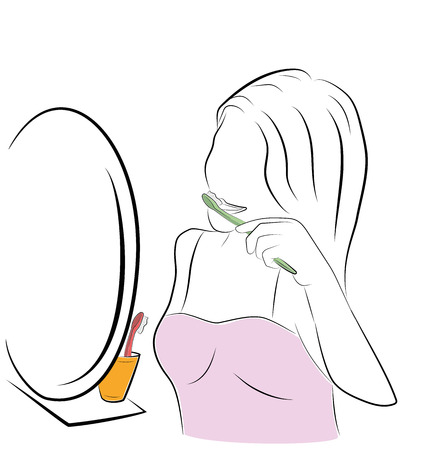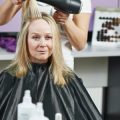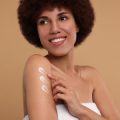1. Understanding Rosacea and Redness
Rosacea is a chronic skin condition that mainly affects the face, causing redness, visible blood vessels, and sometimes bumps or pimples. It’s more common than you might think—millions of Americans deal with rosacea every year. The symptoms can come and go, often flaring up in response to certain triggers.
Common Symptoms of Rosacea
| Symptom | Description |
|---|---|
| Facial Redness | Persistent flushing or blushing, usually on the cheeks, nose, forehead, and chin. |
| Visible Blood Vessels | Small blood vessels become noticeable on the skin’s surface. |
| Bumps and Pimples | Red or pus-filled bumps that look similar to acne. |
| Sensitivity | Stinging or burning sensations; skin may feel tender or dry. |
| Eye Irritation | Watery or irritated eyes (ocular rosacea), sometimes with swollen eyelids. |
Typical Triggers for Flare-Ups
People living in the U.S. often find their rosacea flares up due to:
- Hot weather or sun exposure: Spending time outdoors without protection can make symptoms worse.
- Spicy foods or hot drinks: These are common in American diets and can trigger redness quickly.
- Alcohol, especially red wine: Even a single glass can cause flushing for some people.
- Stress: Busy lifestyles and work stress are frequent triggers in daily American life.
- Certain skincare products: Ingredients like alcohol, fragrance, or harsh exfoliants can irritate sensitive skin.
- Temperature changes: Moving from cold air outside to heated indoors can also lead to flare-ups.
The Impact on Daily Life
Dealing with rosacea isn’t just about appearances—it can affect self-confidence and emotional well-being. Many people feel embarrassed during flare-ups, which may influence social activities, work meetings, or even casual outings. In the U.S., where face-to-face interactions are important both professionally and personally, managing visible redness is a big concern for many adults. Understanding your own triggers and recognizing early symptoms is key to keeping rosacea under control from day to day.
2. Gut Health: The Foundation for Skin Wellness
What Is the Gut-Skin Axis?
The gut-skin axis is a term that describes the deep connection between your digestive system and your skin health. Simply put, what happens in your gut doesn’t stay in your gut—it can show up on your skin, too. When your digestive system is out of balance, it may contribute to skin issues like rosacea and facial redness.
How Does the Gut Microbiome Affect Your Skin?
Your gut is home to trillions of bacteria, known as the gut microbiome. These bacteria help digest food, support your immune system, and keep inflammation in check. If the balance of these bacteria gets disrupted—something doctors call “gut dysbiosis”—it can trigger inflammation throughout the body, including your skin.
Common Signs of an Unbalanced Gut
| Gut Symptoms | Possible Skin Reactions |
|---|---|
| Bloating & Gas | Facial Redness |
| Constipation or Diarrhea | Pimples or Pustules (rosacea type) |
| Frequent Stomach Upset | Sensitive or Irritated Skin |
| Food Intolerances | Flare-ups of Rosacea |
Why Gut Imbalances Can Trigger Rosacea and Redness
When harmful bacteria outnumber the good ones in your gut, it may cause your immune system to overreact. This heightened immune response often leads to inflammation—one of the main drivers behind rosacea flare-ups and persistent redness. Researchers have even found that people with rosacea are more likely to have certain gut conditions, like small intestinal bacterial overgrowth (SIBO) or irritable bowel syndrome (IBS).
Takeaway: A Healthy Gut Supports Calm, Clear Skin
If you’re dealing with rosacea or unexplained redness, paying attention to your gut health can be a game-changer. By supporting a healthy balance of gut bacteria, you may help reduce skin inflammation and promote a calmer complexion from the inside out.

3. Research Insights: Links Between Gut Issues and Rosacea
It might sound surprising, but what’s going on in your gut can actually show up on your skin—especially if you struggle with rosacea or facial redness. Recent studies are shining a light on how digestive problems like SIBO (Small Intestinal Bacterial Overgrowth) and leaky gut might be fueling those frustrating flare-ups.
What the Science Says
Scientists have found that people with rosacea are more likely to also have certain gut issues compared to those without skin concerns. Here’s a quick look at some of the most talked-about digestive conditions linked to rosacea:
| Gut Issue | What It Is | How It Connects to Rosacea |
|---|---|---|
| SIBO (Small Intestinal Bacterial Overgrowth) | A condition where too many bacteria grow in the small intestine, causing bloating and discomfort. | Studies show that treating SIBO can lead to fewer rosacea flare-ups in some people. |
| Leaky Gut (Increased Intestinal Permeability) | The gut lining becomes “leaky,” letting toxins and bacteria pass into the bloodstream. | This can trigger inflammation throughout the body, including in the skin, possibly worsening redness and bumps. |
| H. pylori Infection | A common stomach bacteria that can cause ulcers and digestive upset. | Research suggests a higher rate of H. pylori infection in folks with rosacea, but not everyone with this bacteria develops skin symptoms. |
Key Takeaways from Current Research
- Improved Skin After Gut Treatment: Several studies report that treating underlying gut problems—like using antibiotics for SIBO—can help reduce rosacea symptoms for some people.
- The Inflammation Connection: When your gut isn’t healthy, it can lead to more inflammation in your body, which may show up as facial redness or bumps.
- No One-Size-Fits-All: Not every person with rosacea has gut issues, but if you notice digestive troubles along with your skin flares, it’s worth talking to your healthcare provider about checking your gut health.
Friendly Reminder:
If you’re dealing with both tummy troubles and stubborn facial redness, you’re definitely not alone! Scientists are still exploring all the ways our gut and skin talk to each other. For now, paying attention to both sides—the inside and outside—can make a real difference in how your skin feels and looks.
4. American Diet, Stress, and Their Impact on Gut-Skin Health
If you’ve ever wondered why your skin flares up after a stressful week or a fast-food binge, you’re not alone. The typical American lifestyle—think drive-thru meals, late-night snacks, and jam-packed schedules—can have a big impact on both gut health and skin conditions like rosacea and redness.
How the Standard American Diet Affects Your Gut
The Standard American Diet (often called SAD) is high in processed foods, added sugars, unhealthy fats, and low in fiber. This combination can throw your gut microbiome—the trillions of bacteria living in your digestive tract—out of balance. When your gut is unhappy, it can lead to more inflammation throughout your body, including your skin.
Common Components of the Standard American Diet
| Typical Food Choices | Gut Impact | Potential Skin Reaction |
|---|---|---|
| Sugary drinks & sweets | Feeds harmful gut bacteria | Increases redness & flare-ups |
| Fast food & fried items | Promotes inflammation | Makes rosacea worse |
| Low-fiber meals (white bread, pasta) | Reduces good gut bacteria | Slows down skin repair |
| Dairy-heavy options (cheese, ice cream) | Can disrupt gut balance for some people | May trigger breakouts & redness |
The Stress Factor: How Busy Lifestyles Affect the Gut and Skin
The typical fast-paced American lifestyle often means high stress levels—balancing work, family, social life, and endless notifications. Chronic stress can weaken your gut barrier and make it easier for toxins to enter the bloodstream. This process can spark inflammation that shows up as facial redness or rosacea flare-ups.
Stress Triggers That Can Worsen Rosacea:
- Lack of sleep from long work hours or screen time late at night
- Caffeine overload to keep up with busy days
- Skipping meals or eating on the go, leading to poor digestion
- Not enough relaxation or downtime to let your body reset
Tips for Supporting Gut-Skin Health Amid an American Lifestyle
- Add more fiber: Include veggies, fruits, beans, and whole grains at each meal.
- Cut back on sugar and processed foods: Swap out soda for water or herbal tea, and choose baked instead of fried foods.
- Prioritize stress management: Even five minutes of deep breathing or a short walk outside can make a difference.
- Stay hydrated: Drinking enough water helps keep both your gut and skin happy.
- Aim for regular meals: Eating at consistent times supports healthy digestion and reduces stress on your gut.
5. Building a Rosacea-Friendly Gut: Practical Tips
Gut-Friendly Diet Swaps for Reducing Redness
What you eat every day can have a big impact on both your gut health and your skin’s appearance, especially if you’re dealing with rosacea or facial redness. Making small, manageable changes to your diet can help soothe inflammation from the inside out. Here are some easy swaps tailored for American lifestyles:
Instead of… |
Try This… |
Why It Helps |
|---|---|---|
| White bread & bagels | Whole grain toast or sprouted bread | More fiber supports healthy digestion and feeds good gut bacteria. |
| Sugary breakfast cereals | Oatmeal with berries and chia seeds | Less sugar, more antioxidants and prebiotics to calm inflammation. |
| Soda & sugary drinks | Infused water or kombucha (low-sugar) | Hydration without added sugars; kombucha offers probiotics. |
| Heavy cream-based sauces | Avocado or Greek yogurt dressings | Healthy fats and probiotics support skin barrier function. |
| Pasta made with white flour | Lentil or chickpea pasta | Adds protein and fiber, fueling gut-friendly microbes. |
Probiotic & Prebiotic Options for Daily Support
Your gut thrives when you feed it both probiotics (live good bacteria) and prebiotics (fiber that nourishes those bacteria). Including both in your meals helps keep inflammation in check and may reduce rosacea flare-ups. Here are some easy options:
Probiotic Foods (Eat Daily or Weekly)
- Greek yogurt with live cultures – great for breakfast or snacks.
- Kefir – a tangy drinkable yogurt alternative.
- Sauerkraut or kimchi – add to salads, sandwiches, or bowls.
- Kombucha – choose low-sugar versions for an afternoon pick-me-up.
- Cottage cheese with live cultures – enjoy with fruit or veggies.
Prebiotic Foods (Include Regularly)
- Berries – blueberries, raspberries, strawberries.
- Bananas (especially slightly green).
- Oats – overnight oats are quick and filling.
- Asparagus, onions, leeks, garlic – roast them for dinner sides.
- Beans and lentils – toss into soups or salads for extra fiber.
Lifestyle Habits for a Healthier Gut & Calmer Skin
Daily Practices You Can Start at Home:
- Stay hydrated: Aim for at least 8 cups of water daily to help flush out toxins and maintain skin moisture.
- Avoid skipping meals: Eating regular meals helps stabilize blood sugar and prevent stress-related skin flare-ups.
- Manage stress: Try mindful activities like yoga, meditation, or even a short walk—chronic stress can worsen both gut health and rosacea symptoms.
- Aim for 7-8 hours of sleep: Rest is essential for healing your gut lining and calming skin inflammation.
- Pace new foods: When adding probiotic-rich or high-fiber foods, go slow to let your digestive system adjust comfortably.
A Quick-Start Routine Example:
Time of Day |
Action Step |
|---|---|
| Morning | A bowl of Greek yogurt topped with berries and chia seeds + a glass of water |
| Noon | Lentil salad with roasted asparagus + infused water with lemon slices |
| Snack Time | Kombucha (low sugar) or banana + handful of nuts |
| Dinner | Baked salmon, whole grain rice, steamed broccoli + sauerkraut side |
| Evening Wind Down | Meditation app session or gentle stretching before bed |
Tweaking your daily habits doesn’t have to be overwhelming. With these practical tips, you’re supporting your gut—and giving your skin its best shot at looking calm, clear, and healthy from the inside out!
6. When to Seek Help: Guidance for Managing Persistent Symptoms
If you’re doing your best to support your gut health but still struggling with rosacea or facial redness, it might be time to get some professional help. Let’s break down when you should consider reaching out to a dermatologist or gastroenterologist in the U.S., and what you can expect during your visit.
When Should You See a Specialist?
| Symptom | Who to See | Why It Matters |
|---|---|---|
| Persistent facial redness | Dermatologist | Ongoing redness that doesn’t improve may need prescription creams or treatments. |
| Frequent digestive issues (bloating, pain, diarrhea) | Gastroenterologist | Gut problems could be linked to skin symptoms and may need further testing. |
| Painful or swollen skin, pus-filled bumps | Dermatologist | This could be a sign of more severe rosacea needing medical therapy. |
| No improvement after lifestyle changes | Dermatologist & Gastroenterologist | A team approach can help uncover hidden triggers from both skin and gut health perspectives. |
What Happens During Your Visit?
Dermatologist Appointment:
- Skin Assessment: The doctor will look closely at your skin, ask about your symptoms, and review your skincare routine.
- Treatment Plan: You may receive topical medications, oral antibiotics, or recommendations for gentle cleansers and moisturizers.
- Lifestyle Advice: Expect tips on avoiding triggers like certain foods, alcohol, and harsh weather.
Gastroenterologist Appointment:
- Digestive History: They’ll ask about your gut health—any pain, bloating, food sensitivities, or changes in bowel habits.
- Possible Tests: Blood work, stool tests, or even breath tests to check for bacterial imbalances.
- Treatment Options: Guidance on diet adjustments, probiotics, or medication if an underlying gut condition is found.
Navigating the U.S. Healthcare System
If you have insurance, start by contacting your primary care provider for a referral. Many dermatologists and gastroenterologists require referrals for specialist visits. If you don’t have insurance, community clinics or telehealth platforms can offer affordable options. Don’t be afraid to ask questions during appointments—your comfort and understanding are key!

